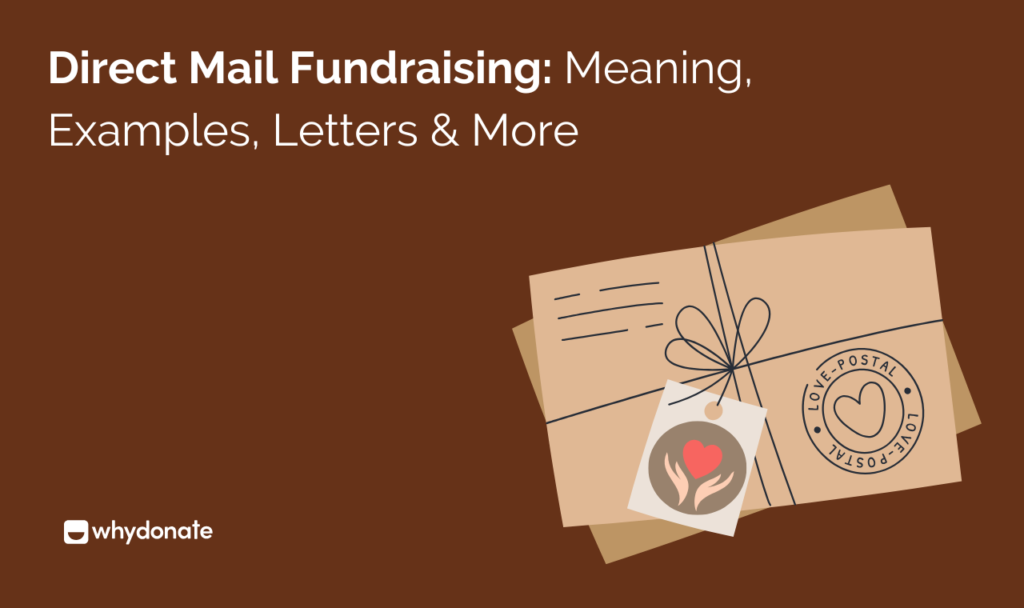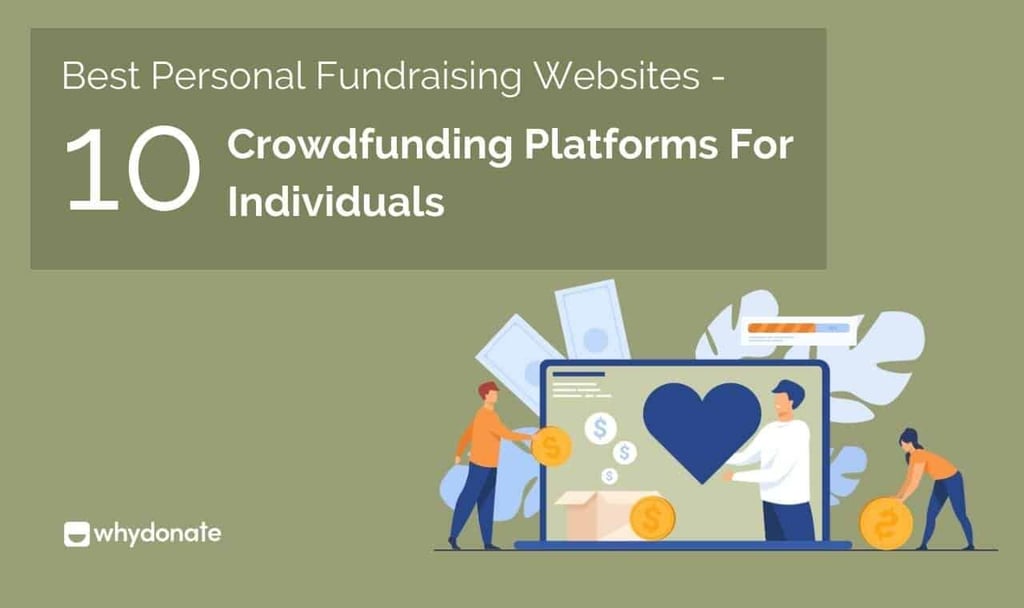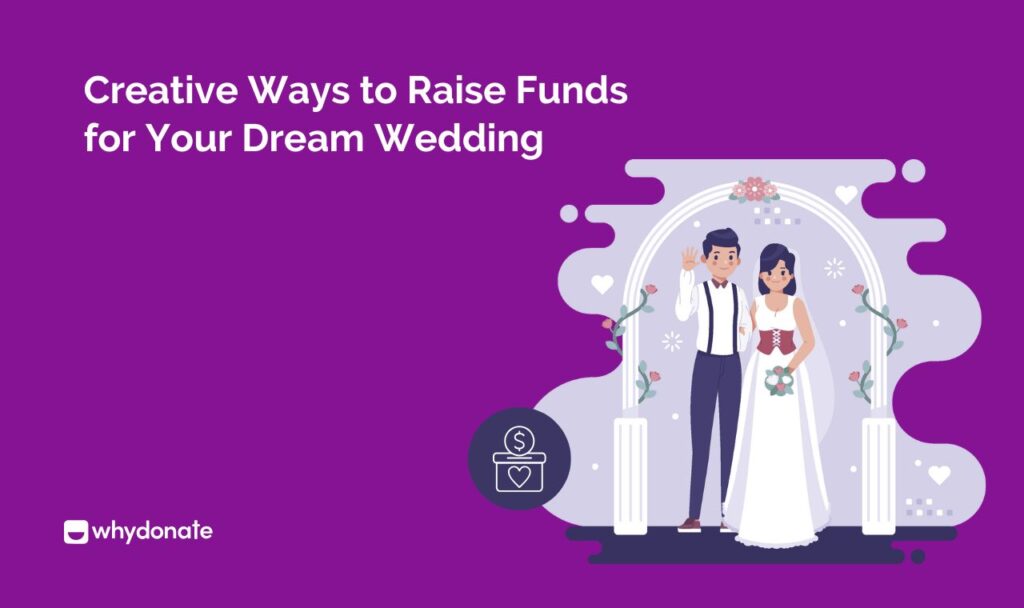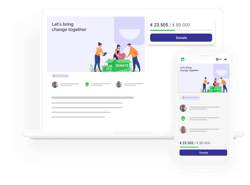Looking beyond the government, the backbone of non-profit organizations is fundraising, while direct mail fundraising still remains one of its most effective and tried methods. Therefore, even with growing technology, direct mail remains part of the fundraising strategies of various bodies.
In this blog, we are going to talk about the definition of direct mail fundraising for nonprofits and best practices, as well as offer tips on composing an appealing fundraising letter, among others, including examples or creative ideas to help you with your next campaign. Lastly, we have curated a sample direct mail fundraising letter for you. So, let’s get started!
Make a Difference Now – Launch your fundraiser on WhyDonate and help those in need.
Table of Contents
What Is Direct Mail Fundraising?
Direct mail fundraising is a form of collecting help that has not changed over time, where fundraising flyers, letters, postcards, posters, or other printed items are sent out in a request to fundraise. It serves the purpose of asking for support towards an endeavor, initiative, or corporation. In contrast to fundraising email and online campaigns, mailing works directly and is more personal. This is frequently applied by non-profit organizations, charities, and electoral movements, among other sources looking for revenue.
A successful direct mail utilizes this human element in order to reach donors who prefer such modes of communication even at times of digitization. It is also beneficial in targeting different populations, hence customizing the message to correspond with an individual’s interests regarding previous donations.
When it comes to direct mail promotion, using an online fundraising platform like WhyDonate can help you streamline donations. WhyDonate allows for easy integration with your campaigns, making it easy for donors to give online even after receiving your direct mail. This helps connect conventional and digital fundraising approaches so that no potential donation goes unnoticed.
- Amplify Your Fundraising Efforts. Reach A Wider Audience For FREE! Start Today!

What Are The Best Direct Mail Fundraising Best Practices?
There are some best practices that you should always follow in order to ensure your direct mail fundraising campaign is successful. Here’s how to go about it:
1. Understand Your Audience
Before composing your message, it is important to know who your audience is. Differentiate your mailing list according to donation history, gender, or age. This will enable you to customize your message, enhancing the likelihood of receiving a favorable response.
2. Personalization
Using a specific name to address the recipient is recommended, and wherever possible, mention their previous contribution or any past participation they had with your organization. A personalized letter sounds more genuine. Hence, it is likely to elicit an emotion that can result in a profound engagement.
3. Compelling Storytelling
Craft a compelling charity story that can touch hearts. Tell the tales of people or neighborhoods whose lives have been improved because of your organization’s efforts. By doing so, you enable donors to appreciate how their donations are applied practically.
4. Clear Call To Action (CTA)
For this purpose, make sure to enumerate what you really need from the recipient of your letter with a clear call to action (CTA). It doesn’t matter whether you are asking them to attend an event or donate directly. You should have a clear call to action, and convenience instructions should be followed. In addition, ensure that this visual CTA is used in the letter and make it stand out.
5. Offer Multiple Ways To Give
Ways for donors to give must be different, like online, via mail, over the phone, etc. Including your WhyDonate campaign link would make it simpler for people looking to donate on the web since they have safety as well as comfort in their actions.
6. Design And Layout
Ensure your email has a formal design and that it is easy to read. For this reason, use quality photos, readable typefaces, and a clean layout. The design should reinforce the content without appearing overwhelming.
7. Follow Up
The initial mail sending should not be your last effort. To sustain a good donor relationship, always send a thank-you letter, let them know about the usage of their donations from time to time, and appeal for additional donations if necessary. This is what we mean when we say that regular communication is a building block for relations between you and the donors.
Set up a fundraiser on WhyDonate and inspire others to give.

How To Write A Direct Mail Fundraising Letter?
Creating a letter for mail fundraising is an art and entails carefully managing emotions, articulation, and arguments. Here’s how to write a direct mail fundraising letter that will impress your target audience:
1. Start With A Personalized Greeting
Start your letter with a personalized salutation. That way, you can use the recipient’s name to make them feel closer to you. For instance, instead of saying “Dear Friend,” say “Dear John.”
2. Capture Attention With A Strong Opening
When crafting the first words of your letter, make them captivating enough to grab the audience right away. Start with an alluring fact, a strong quotation, or a very brief narrative that would serve as hooks. For instance, why don’t you try this one: “Did you know that more than 5,000 kids sleep on empty stomachs each night within our neighborhood.”
3. Clearly Explain The Need
Right after a tale, explain the reasons for your reaching out clearly. Explain in detail which particular need or task you are collecting money for. Be open about how donations will be utilized and what the expected results will be.
4. Make The Ask
You should not shy away from asking for donations. Please state your desired amount clearly, and also tell them how it will help. For instance, “A donation of fifty dollars can feed a family in need for one week.”
5. Create Urgency
Instilling a feeling of urgency leads to prompt engagement. Discuss deadlines that are approaching, matching gift chances, or time-dependent undertakings. This can inspire donors to respond promptly.
6. Express Gratitude
In case they persist in not giving, show gratitude for their kindness beforehand. Come out and tell them how much you appreciate and cherish their assistance in whatever form it comes.
7. End With A Warm Closing
Concluding your letter will need to have a warm and personal ending. If you can sign off by hand, this adds that special touch, which makes all the difference.
Postscript (P.S.)
With the P.S. line, repeat your request or add new information. Since many individuals only skim-read letters and will frequently look at the P.S. First, do it well.

What Are The Best Direct Mail Fundraising Ideas?
If you’re looking to elevate your direct mail fundraising efforts, here are some innovative ideas to make your campaign stand out and engage donors effectively:
Personalized Impact Reports
One of the most powerful ways to demonstrate the impact of a donor’s contribution is through personalized reports. Include detailed stories, photos, and testimonials from those who have benefited from the donations.
Nonprofit Impact Report should reflect how the donor’s support has created lasting change. Not only does this show appreciation, but it also builds emotional connections and encourages future contributions.
Handwritten Thank You Notes
Adding a personal touch can make a huge difference. Sending handwritten thank you notes or signatures in your direct mail communications shows donors that you truly appreciate their support. This small gesture can help your organization stand out and makes the recipient feel personally valued, fostering stronger relationships.
Engaging Interactive Mail Pieces
Take your direct mail to the next level by incorporating interactive elements. Consider adding pull-out sections, donation QR codes leading to videos, or even small branded gifts tied to your cause.
Interactive mail pieces not only capture attention but also create an engaging experience for the recipient, which can lead to higher response rates and donations.
Seasonal and Themed Campaigns
Align your direct mail efforts with seasonal themes or special causes. For instance, a back-to-school campaign from an educational nonprofit or a spring renewal theme from an environmental organization.
A well-timed campaign that taps into the season or current events creates a sense of urgency, making donors more likely to engage.
Matching Gift Campaigns
Leverage matching gifts to motivate donors. By informing recipients that their donations will be matched by a corporate partner or philanthropist, you add an extra layer of incentive.
This can be especially impactful when the matching opportunity is highlighted with urgency, encouraging donors to act quickly and amplify their contribution.
By incorporating these creative ideas into your direct mail campaigns, you can foster stronger connections with donors, increase engagement, and boost fundraising results.
Register with WhyDonate and fundraise for a cause you care about.
Direct Mail Fundraising Examples
Here are the best direct mail fundraising examples that you can tailor as per your campaign:
Example 1: Donation Request
Subject: [Donor’s Name], Your Support Can Change Lives Today!
Dear [Donor’s Name],
Thanks to your previous support, [Your Organization’s Name] has been able to make a real difference. Last year, your generosity helped provide [specific impact], changing lives in ways we never thought possible.
Today, we’re reaching out to you again. Meet [Person’s Name], whose life was transformed through your past donations. With your help, [Person’s Name] now enjoys [positive outcome], and we can continue to provide opportunities for more individuals.
You can make a difference today by choosing one of these easy options:
- Donate Online: [Donation URL]
- Send a Check: Use the enclosed envelope to send a check to [Your Organization’s Name]
- Call Us: [Phone Number] for donations or questions.
Every donation, big or small, creates lasting change. We thank you for your continued support and look forward to sharing more success stories with you.
With gratitude,
[Your Organization’s Name]
Example 2: Thank You and Future Support
Subject: [Donor’s Name], Your Support is Transforming Lives!
Dear [Donor’s Name],
We want to extend our heartfelt thanks for your generous contribution to [Your Organization’s Name]. Thanks to donors like you, we’ve been able to achieve [specific milestone or impact].
Because of your support, [Person’s Name] now enjoys [positive outcome], and we’ve been able to make a lasting impact in [specific community or cause].
We ask for your continued support as we work to reach our next goal. Here’s how you can help:
- Donate Online: [Donation URL]
- Send a Check: [Your Organization’s Name] (enclosed envelope)
- Call Us: [Phone Number]
Together, we are creating change. Thank you for being part of our mission.
Warmly,
[Your Organization’s Name]
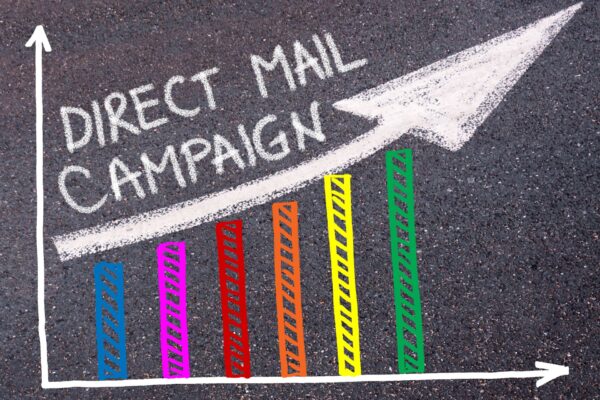
In a Nutshell
When it comes to raising funds, direct mail has proven itself to be a powerful tool for not-for-profit organizations and other bodies. Fundraising through direct mail can be very effective if you understand the basics, follow all best practices, and use creativity in your campaigns.
For groups wishing to combine age-old approaches of fundraising with technologically advanced ones, WhyDonate is a commendable alternative. In addition, WhyDonate can be a multi-site donation platform that ensures that every potential donor has a hassle-free and secure way to give. The importance of establishing personal ties with your donors, making your message clear, and telling an engaging story cannot be overstated. Having them in direct mail fundraising for nonprofits will yield great positive results.
- Start Your Online Campaign Today And Reach Donors Worldwide!
FAQ (Frequently Asked Questions)
Does direct mail work for fundraising?
Yes, direct mail is effective for fundraising as it creates a personal touch and tangible connection with donors. It allows for detailed storytelling and clear calls to action, which can lead to higher engagement and donations.
How do you write a direct mail fundraising letter?
Start with a compelling story or hook, acknowledge past support, and clearly outline the impact of their contributions. Include a specific call to action with multiple donation options, and personalize the letter to make it relevant to the recipient.
What do you write in a fundraising email?
In a fundraising email, begin with a compelling subject line, share a personal or impactful story, clearly state your goal, and include a strong call to action. Make it easy for recipients to donate and express gratitude for their support.
Which site is best for fundraising?
For effective and versatile fundraising, consider using WhyDonate. It offers comprehensive tools for creating campaigns, reaching donors, and managing contributions, making it an excellent choice for both individuals and organizations looking to maximize their fundraising efforts.
